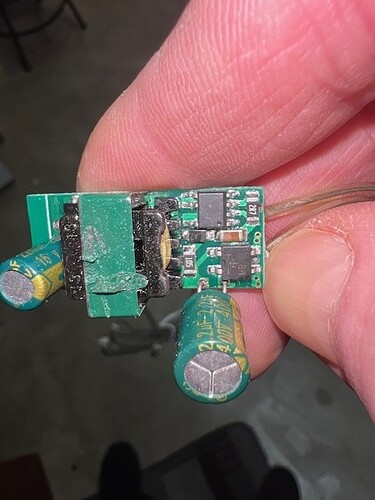power chip
Power Chip: The Heart of Modern Electronics and Energy Efficiency

In the rapidly evolving world of electronics, the power chip stands as a cornerstone of innovation, enabling devices to operate efficiently, reliably, and with greater performance. From smartphones and laptops to electric vehicles and industrial machinery, power chips are integral to managing and converting electrical energy, ensuring that systems run smoothly and consume power optimally. As demand for more efficient and compact electronic solutions grows, the role of power chips becomes increasingly critical. For engineers, designers, and procurement specialists, sourcing high-quality power chips is essential, and platforms like YY-IC’s power chip category provide a comprehensive range of options to meet diverse application needs.
What Is a Power Chip?
A power chip, also known as a power semiconductor or power IC (Integrated Circuit), is a specialized electronic component designed to handle, convert, and regulate electrical power. Unlike standard integrated circuits that focus on signal processing, power chips are built to manage high voltages and currents, making them indispensable in power management and conversion applications. These chips are fabricated using advanced semiconductor materials such as silicon (Si), silicon carbide (SiC), and gallium nitride (GaN), which offer superior performance in terms of efficiency, thermal management, and switching speed.
Power chips are used in a variety of functions, including voltage regulation, power conversion (AC-DC, DC-DC, DC-AC), and motor control. Their ability to efficiently manage power flow has made them a key enabler of modern electronic devices, renewable energy systems, and electric vehicles.
The Role of Power Chips in Electronics
The primary function of a power chip is to control and convert electrical energy with minimal loss. This capability is crucial in applications where energy efficiency, thermal management, and compact size are paramount. Power chips are commonly found in power supplies, battery chargers, inverters, and motor drives, where they ensure that electrical energy is delivered in the right form and at the right time.
In consumer electronics, power chips help extend battery life and reduce heat generation, leading to more reliable and longer-lasting devices. In industrial and automotive applications, they enable the efficient operation of high-power systems, contributing to energy savings and reduced operational costs.
Types of Power Chips and Their Applications
Power chips come in various forms, each tailored to specific applications and performance requirements. The most common types include power MOSFETs (Metal-Oxide-Semiconductor Field-Effect Transistors), IGBTs (Insulated Gate Bipolar Transistors), diodes, and power management ICs.
Power MOSFETs: These are widely used for switching and amplifying electronic signals in power supplies, motor controllers, and LED drivers. Their high switching speed and low on-resistance make them ideal for applications requiring efficient power conversion.
IGBTs: IGBTs combine the high efficiency of MOSFETs with the high voltage capability of bipolar transistors. They are commonly used in high-power applications such as electric vehicles, industrial motor drives, and renewable energy systems.
Power Diodes: Power diodes allow current to flow in one direction and are essential in rectification and protection circuits. Schottky diodes, for example, are known for their fast switching and low forward voltage drop, making them suitable for high-frequency applications.
Power Management ICs (PMICs): PMICs integrate multiple power management functions into a single chip, including voltage regulation, battery charging, and power sequencing. They are widely used in smartphones, tablets, and IoT devices, where space and efficiency are critical.
Wide Bandgap Semiconductors (SiC and GaN): These advanced materials offer superior performance compared to traditional silicon-based power chips. SiC and GaN power chips can operate at higher temperatures, voltages, and frequencies, making them ideal for electric vehicles, solar inverters, and high-efficiency power supplies.
Key Applications of Power Chips
The versatility of power chips makes them suitable for a broad range of applications across various industries:
Consumer Electronics: In smartphones, laptops, and wearable devices, power chips manage battery charging, voltage regulation, and power distribution. Their efficiency directly impacts battery life and device performance, making them a critical component in portable electronics.
Automotive and Electric Vehicles: The automotive industry relies heavily on power chips for electric vehicle (EV) powertrains, battery management systems, and onboard chargers. The shift toward electrification has increased demand for high-performance power chips that can handle the high voltages and currents required in EV applications.
Industrial Automation: Power chips are used in motor drives, robotics, and industrial power supplies, where they enable precise control of electrical energy. Their reliability and efficiency contribute to the overall performance and energy savings of industrial systems.
Renewable Energy Systems: In solar inverters and wind turbines, power chips play a vital role in converting and managing the electrical energy generated from renewable sources. Their efficiency helps maximize energy harvest and reduce losses during conversion.
Telecommunications: Power chips are essential in telecom infrastructure, where they provide efficient power conversion for base stations, data centers, and networking equipment. The demand for high-speed data transmission and reliable power delivery has driven the adoption of advanced power chips in this sector.
Medical Devices: Medical equipment such as MRI machines, portable diagnostic devices, and implantable electronics require precise and reliable power management. Power chips ensure that these devices operate safely and efficiently, even in demanding environments.
Advantages of Advanced Power Chips
The adoption of advanced power chips, particularly those based on wide bandgap materials like SiC and GaN, offers several benefits over traditional silicon-based components:
Higher Efficiency: Wide bandgap power chips can switch faster and operate at higher temperatures, reducing energy losses and improving overall system efficiency. This is particularly important in applications where energy conservation is a priority.
Compact Size: The high power density of advanced power chips allows for smaller and lighter designs, which is crucial in portable and space-constrained applications.
Improved Thermal Performance: SiC and GaN power chips can dissipate heat more effectively, reducing the need for complex cooling systems and enhancing reliability.
Higher Switching Frequencies: The ability to operate at higher frequencies enables the use of smaller passive components, such as inductors and capacitors, further reducing the size and cost of power conversion systems.
Enhanced Reliability: Advanced power chips are more robust and durable, offering longer lifespans and better performance in harsh operating conditions.
Key Considerations When Selecting Power Chips
Choosing the right power chip for a specific application involves evaluating several factors to ensure optimal performance and compatibility:
Voltage and Current Ratings: The power chip must be capable of handling the maximum voltage and current levels of the application without risking failure or degradation.
Switching Speed: The switching speed of the power chip affects the efficiency and performance of the power conversion system. Faster switching speeds generally lead to higher efficiency but may require careful design to minimize electromagnetic interference (EMI).
Thermal Management: Effective heat dissipation is critical for maintaining the reliability and longevity of power chips. Consider the thermal resistance and packaging of the chip to ensure it can operate within the desired temperature range.
Efficiency: The efficiency of the power chip directly impacts the overall energy consumption of the system. Look for chips with low on-resistance and minimal switching losses to maximize efficiency.
Package Type: Power chips are available in various package types, including through-hole, surface-mount, and module packages. The choice of package depends on the application’s power requirements, thermal management needs, and assembly process.
Cost and Availability: While advanced power chips offer superior performance, they may come at a higher cost. Balance performance requirements with budget constraints and ensure that the chosen chip is readily available from reliable suppliers.
The Future of Power Chips: Trends and Innovations
The power chip industry is continuously evolving, driven by the demand for higher efficiency, smaller form factors, and greater reliability. Some of the key trends shaping the future of power chips include:
Wide Bandgap Semiconductors: The adoption of SiC and GaN power chips is expected to grow rapidly, particularly in electric vehicles and renewable energy systems. These materials offer significant performance advantages over traditional silicon, making them ideal for high-power and high-frequency applications.
Integration and Miniaturization: The trend toward integrating multiple power management functions into a single chip is expected to continue, leading to more compact and efficient power solutions. This is particularly important in portable and IoT devices, where space is at a premium.
Smart Power Chips: The integration of sensing, communication, and control functions into power chips is enabling the development of smart power management systems. These chips can monitor their own performance, adjust operating parameters in real-time, and communicate with other system components for optimized operation.
Sustainability: As the world moves toward greener and more sustainable energy solutions, power chips will play a crucial role in improving the efficiency of renewable energy systems and reducing energy waste.
Where to Source High-Quality Power Chips
For engineers and procurement professionals, sourcing high-quality power chips is essential for ensuring the success of their projects. Platforms like YY-IC’s power chip category offer a wide selection of power chips from leading manufacturers, providing detailed specifications, competitive pricing, and reliable supply chain support. Whether you’re designing a new product or upgrading an existing system, YY-IC provides access to the latest power chip technologies to meet your needs.
Installation and Design Tips for Power Chips
Proper installation and design are critical for maximizing the performance and reliability of power chips:
PCB Layout: Careful attention to PCB layout is essential for minimizing parasitic inductance and capacitance, which can affect the performance of power chips. Follow the manufacturer’s guidelines for trace routing, grounding, and component placement.
Thermal Management: Ensure that the power chip is adequately cooled, either through heatsinks, thermal pads, or active cooling methods. Proper thermal management is key to preventing overheating and ensuring long-term reliability.
EMI Mitigation: High-speed switching can generate electromagnetic interference, which may affect other components in the system. Use appropriate filtering, shielding, and layout techniques to minimize EMI and ensure compliance with regulatory standards.
Testing and Validation: Thoroughly test the power chip and the surrounding circuitry to verify performance under real-world conditions. This includes checking for efficiency, thermal behavior, and reliability over time.
Conclusion
Power chips are the backbone of modern electronics, enabling efficient power management and conversion in a wide range of applications. From consumer devices to industrial systems and electric vehicles, their role in enhancing performance, reliability, and energy efficiency cannot be overstated. As technology continues to advance, the demand for high-performance power chips will only grow, driving innovation in materials, design, and integration.
For a comprehensive selection of power chips, visit YY-IC’s power chip category, where you’ll find a curated collection of components to meet your design requirements. By staying informed about the latest developments in power chip technology and selecting the right components for your applications, you can create more efficient, reliable, and sustainable electronic systems.

